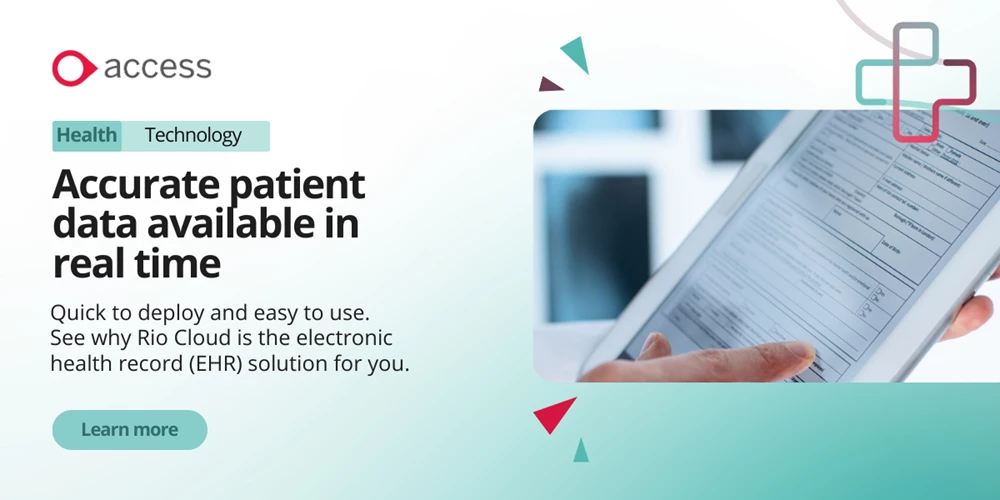All in One vs Best of Breed – Choosing a healthcare solution
All in One vs Best of Breed is an argument about software and establishing a system of solutions. In this instance it is about how health and care providers should go about purchasing and implementing software to help with patient care and other services, and how best to build up that integrated system of solutions so the care workflow is as smooth and efficient as possible.
The two sides to the debate are as follows:
All in One: A single provider with multiple solutions is the best option, because it makes integration and implementation easier as you deal with one organisation.
Best of Breed: Multiple providers means you can choose highly specialised solutions, giving you the best tool for each requirement and a less complex deployment. It's important to maintain a balanced relationship with providers, and multiple solutions helps prevent any single group from exerting undue influence or control over you.
The important thing is quality, above all else. There are lots of healthcare organisations across the UK providing a wide range of services. They need good software solutions that can handle the variety of hospital or community care services provided on a daily basis. Customisation, scalability, real-time access, interoperability… all of these things are what will enable world-class care and allow the most efficient care processes.
In this article we will tackle terminology, like convergence and interoperability, so that you can properly understand the ambitions of the stakeholders involved. We will then explore both sides of the argument, covering the advantages and disadvantages of each, to determine which approach is the most beneficial to healthcare organisations.

Convergence in Healthcare
The National Library of Medicine describes convergence in healthcare as the collaboration – of care organisations and software providers – to deliver population health management. It also states that healthcare convergence as a definition is applicable in cases where healthcare organisations become similar.
The second definition is arguably more appropriate, or perhaps relevant, here. EPR convergence is a subject that was brought up around two years ago. Digital Health’s article regarding a ‘major push on EPR convergence’ reports how the NHS wants trusts and other organisations to, in effect, whittle down the list of EPR solutions used to a reliable few; the logic being that this would make nationwide integration and collaboration a lot easier.
All in One software
All in One software is as the name says: it’s a package deal from a software provider to give you a selection of solutions. There are several advantages to be gained by onboarding such a bundle:
- Guaranteed interoperability between all solutions, as they share the same coding basis.
- Reduced administrative back-and-forth by dealing with just one provider.
- Improved accessibility as software interfaces will share many similarities.
- Reduced security risk by minimising the need to utilise APIs and outbound communication.
In effect you’re buying a pre-build ecosystem of solutions to deploy within your healthcare organisation, with the assurance that each software component can definitely communicate with each other and will be an easier learning process for healthcare professionals so as not to disrupt care services more than necessary.
This doesn’t come without cost however, and such solution packages are an expensive upfront cost. Digital Health reported in February 2023 that Sheffield Teaching Hospitals had paid £85 million for a deal with Oracle Cerner for their EPR and associated modules. Similarly, East Suffolk and North Essex have recently signed an EPR contract with EPIC – though that fee is yet to be disclosed.

Best in Class solutions
The counter argument is to pursue best in breed or best in class solutions. This is the opposite of a bundle approach: you are manually assembling a health software ecosystem and compiling these different solutions.
There are plenty of upsides to best in class as an approach:
- You are getting the very best solution for each area of support needed.
- Better scalability for your organisation, helping pace expansion without financial burden.
- No need to replace existing solutions before time – especially if good software.
- Less dependency on one sole supplier.
- Ensuring the flexibility to incorporate or discontinue solutions as needed safeguards against being locked into a single provider indefinitely.
Best in breed technology will enable you to improve healthcare quality and subsequent care outcomes for patients or clients. One of the criticisms of this approach is the problem of software overlap compared to a well laid out all-in-one solution, but this comes down to research and preparation – you don’t have to buy a solution that overlaps into another area you already have covered. You might actively avoid it, or you might be indifferent to it and just ignore that functionality.
To quote a colleague published on LinkedIn: “Technology may be already installed and paid for, it may be familiar (including teams being fully trained on how to use it) and it may be embedded in your current business processes and workflows. It may just be the best solution for the needs of the service.”
Rolling out an ‘All in One’ package is obviously a complex deployment given the sheer scale of software being implemented, but NHS Providers – in their article about ‘Understanding EPRs’ - argues that “trust-wide EPRs have attracted criticism from frontline staff as clunky, poorly designed systems that slow down, rather than speed up, care.”
This poses a problem. The bigger the project, the greater the chance of delays occurring, but if the systems are trying to do too much and being the jack-of-all-trades then that’s going to hurt adoption by clinical staff, and will then have mixed results regarding the benefits realisation – quality and a lack of specialist knowledge or capability. This is also at the trust or health board level, so any of these problems will scale up significantly at an ICS level.
Best in Class technology is an accumulation however, which needs interoperability…
What does interoperability mean?
Interoperability is “the ability to work together with other systems”, according to the Cambridge Dictionary. In healthcare, this then refers to software interoperability and the capability of solutions to work together. Are they able to communicate? Can they share information securely? Is the information still in tact and accurate?
Interoperability in healthcare typically revolves around the usage of application programming interfaces or APIs. These are the bridges or translators allowing one solution to engage with another. As mentioned above, the NHS typically utilises a specific type of Fast Healthcare Interoperability Resources (FHIR) API.
Importance of interoperability in healthcare
The benefits of interoperability in healthcare are what make it important. By onboarding solutions capable of interoperability, you can extend the reach of your patient records and other medical information. This connectivity enables and encourages collaboration, it allows for longitudinal records so that patient data is as accurate as possible, and it encourages learning and engagement.
You also need interoperability to be able to pursue best in breed solutions. Ignoring the need to connect to the rest of an Integrated Care System, you also need your software to be able to work as a unified network. Interoperability protocols enable this.
Barriers to interoperability in healthcare
Of course, there are some barriers or challenges regarding interoperability in healthcare. We talk about the usage of existing solutions and systems, but if these are too old – “legacy systems” – then they will be incapable of interoperability and will need overhauling.
There’s also the issue of resources. Interoperability is becoming more commonplace but it’s still a work in progress, and the better-established solutions may cost more to onboard given the selling point of reliable connectivity.
Finally, standards. Lots of different solutions, lots of different standards… whether regarding data or terminology or any other metric. Ensuring a level playing field between different healthcare software can be tricky.

All-in-one vs best-of-breed – the conclusion
There are benefits to be had from both opportunities, but the flexibility in price and deployment, as well as the quality that best in class software offers are too good to miss out on – even if there is a little extra work required for onboarding. Healthcare organisations shouldn’t find that too off-putting though, considering the improvements to care provision and outcomes the best software can offer.
The one concern that might be lingering is the question of interoperability. It’s a big requirement and the crux of best-in-class working as a concept, but ultimately the best solutions are only the best if they can handle interoperability. They should have the proficiency to manage the commonplace HL7 FHIR APIs (NHS standard but there are other APIs) needed to communicate data from platform to platform, ICS to ICS.
As always we advise you to do your research and consult the NHS lists for approved suppliers and the categories they are accredited in. This will help guide your hand towards trusted software providers and the best quality solutions. Here at The Access Group, we have several accredited healthcare software solutions that can assist with analytics, interoperability, and digitally overhauling outdated processes.

